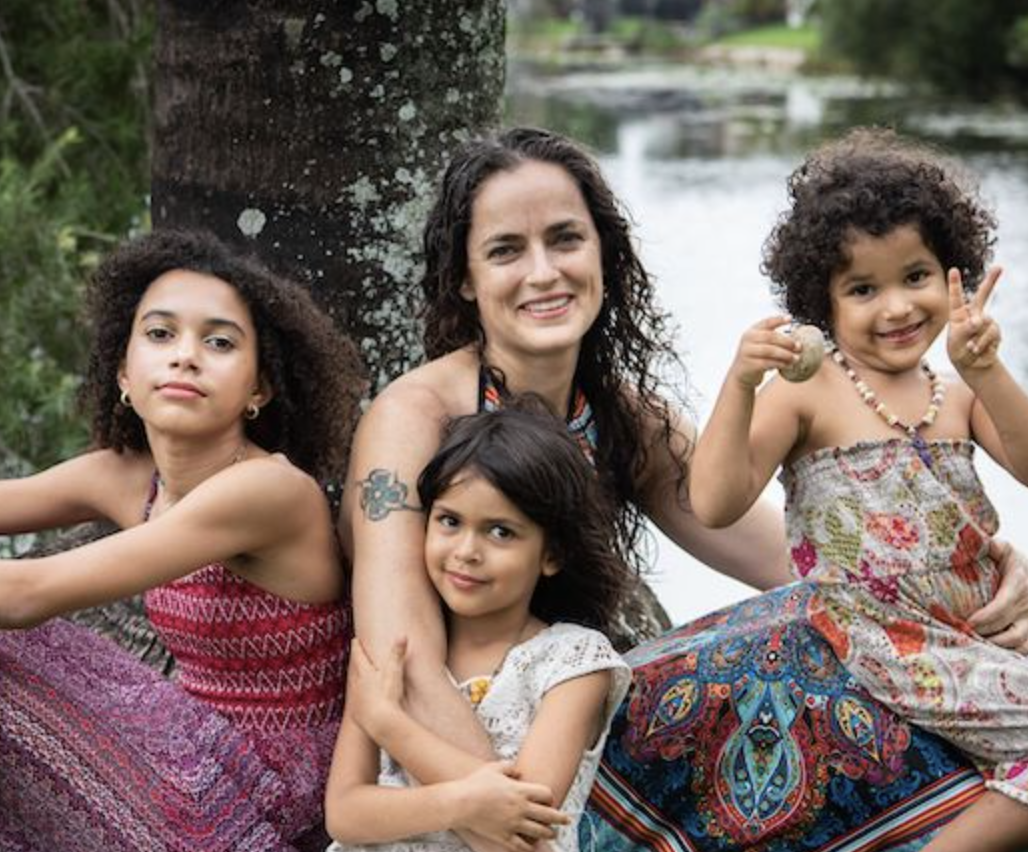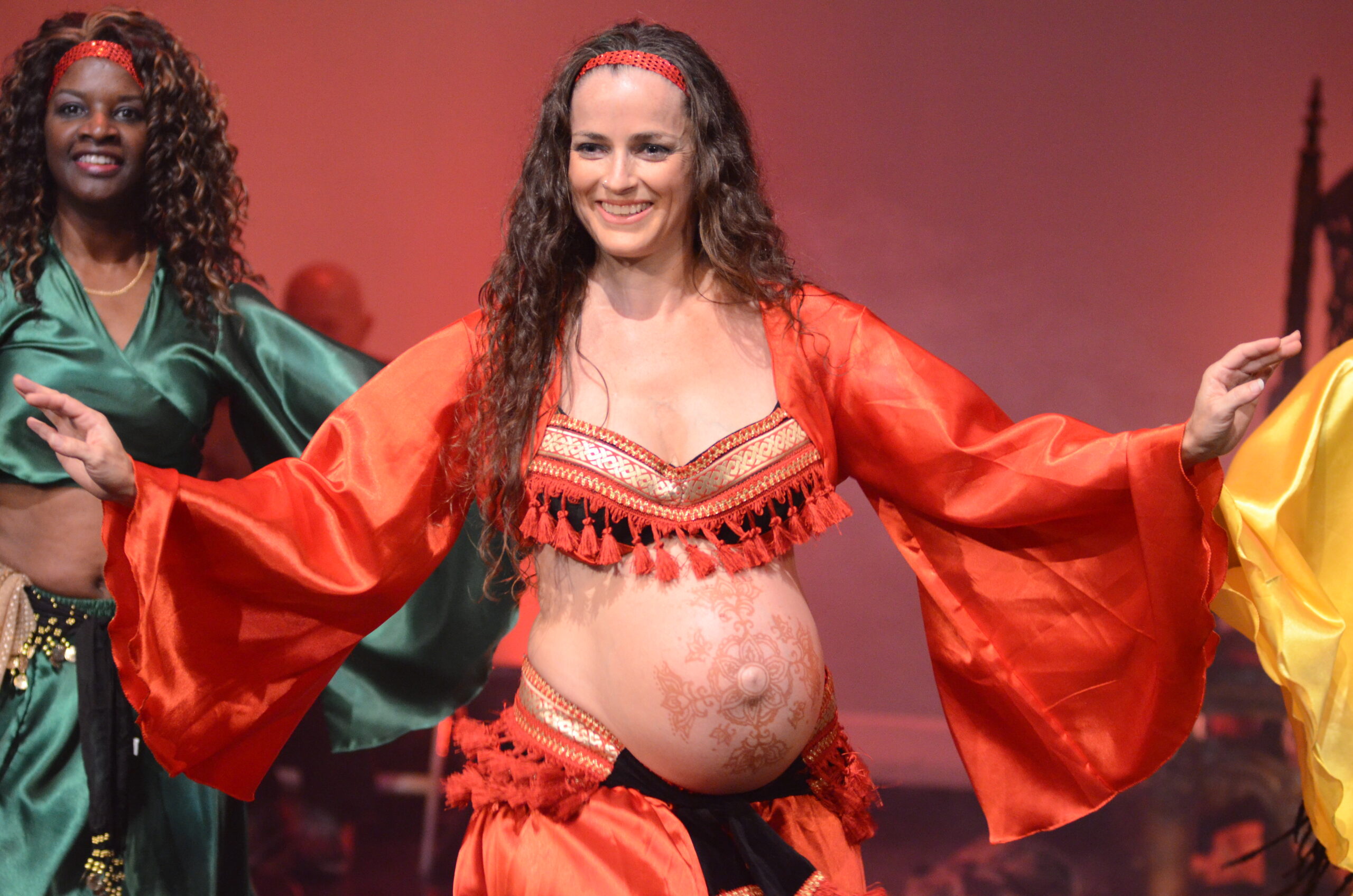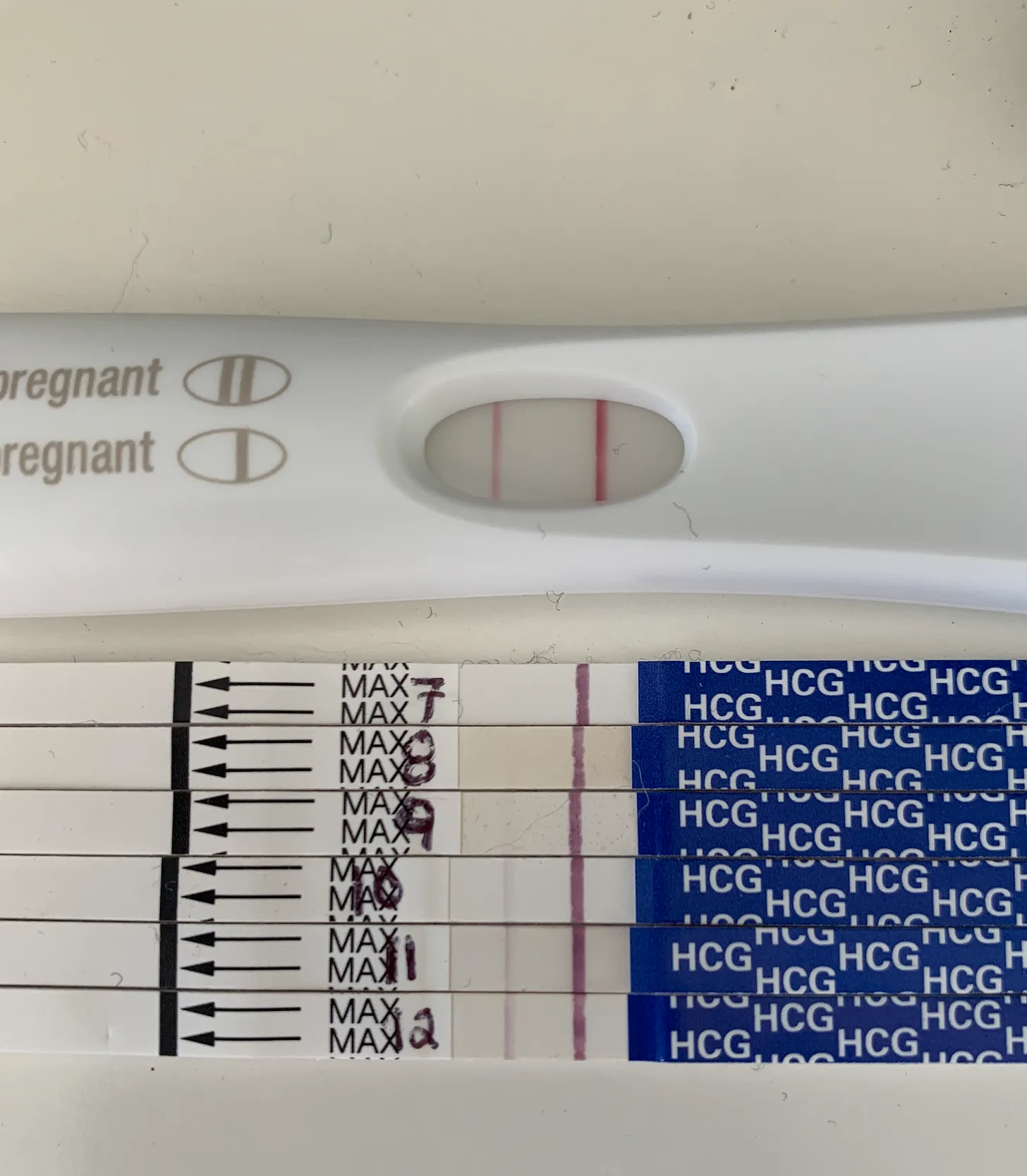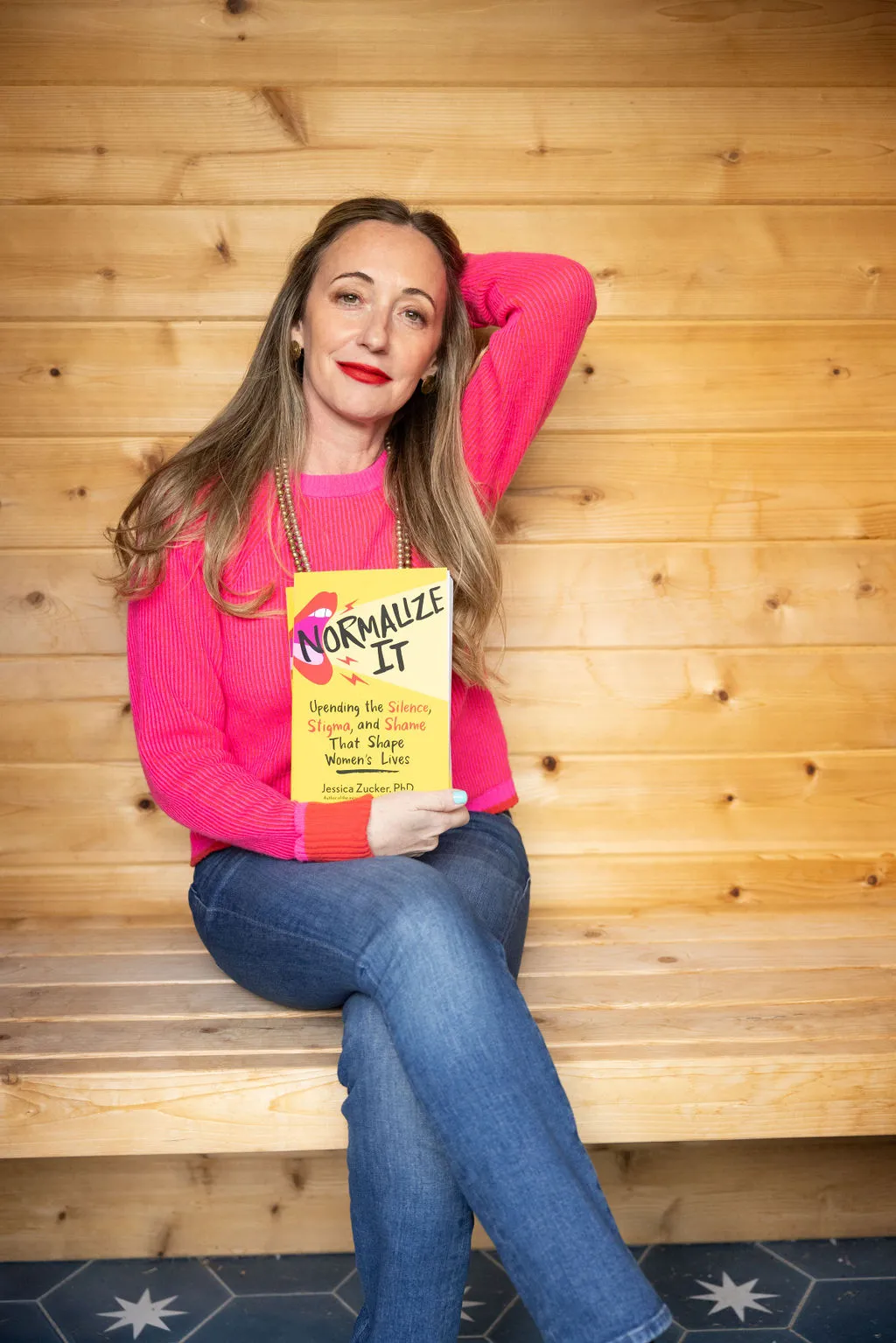Miscarriage isn’t just a moment in time—it’s the collapse of a future we were already loving. It’s the aching space between what could have been and what will never be. It lives in our bodies, our dreams, our relationships, and the parts of ourselves we don’t always have words for.
Through Maya’s story, we glimpse what pregnancy loss really feels like—the quiet hope you hold close, the shock when everything changes, the grief no one can see, and the way your body remembers even when the world moves on. This is the labyrinth so many of us find ourselves in—grieving in silence, piecing ourselves back together, trying to feel at home in our skin again.
For Maya, loss became both a teacher and a transformation. Her story reminds us that grief doesn’t end when the bleeding stops—it evolves, spirals, and eventually gives way to something sacred. This isn’t just a story of loss—it’s a story of becoming.
_____________________________________________________________________________________________________________________
A slow smile spread across Maya’s gentle face as she watched the bright red line appear before her. This simple line symbolized the fulfillment of a dream and the miracle of her own body. It meant she would be a mother again.
But this time, it would be different. This time she had a partner to walk beside her — this time she would birth not just a baby, but a family.
She carried the news secretly at first, clutched it to her heart as something only she and he knew— savoring the sensations, smiling at the thought of sharing the news with her daughter, who had been calling for a sibling for quite some time.
Her daily routine had not changed much, but within it now lived an awareness of a profound shift unfolding inside her, a sense of freshness that gave her life new meaning. Although she wanted to sing to the mountain tops “I’m pregnant!” she sang on the inside, waiting for that spark to turn into a flame…
But the flame never came.
One morning, in her second moon—just 8 weeks into her pregnancy—it all fell apart. The dream, the family, even her own body. She noticed blood spots, small at first, then more. Her heart pounded at the thought of losing this baby. She prayed. She rested. She sought healing from her mother, a powerful medicine woman, who burned herbs, applied needles, and whispered prayers over her. But the bright red blood kept coming, and the pain deepened.
The knot in her chest pained her more than the sensations in her body. It felt as if a tornado had swept through her—taking with it a piece of her soul, as if someone had awakened her abruptly from a dream and forced her to confront a harsh new reality.
She had already had visions of this baby—the shape of his face, the scent of his skin. She had imagined her belly swelling with life, her lover’s hands wrapped around her, her daughter’s laughter when she learned she’d be a big sister. And then, in a matter of hours, it was all gone.
In the empty weeks that followed, Maya asked every question grief brings: What did I do wrong? Why did my body fail me? She tried to makes sense of it but her questions remained unanswered.
Many moons passed. Each moon cycle became a mirror of her hope and heartbreak. With the new moon, she felt renewal—a flicker of maybe this time. (The new moon, dark in the sky, symbolizes beginnings and hope.). As the full moon swelled, so did her excitement. (The full moon, radiant and round, mirrors the fertile body of a woman.) She made love to her partner, imagining the intertwining of their souls, as their bodies wrapped themselves around each other, praying that light would take form inside her.
But as the moon waned, anxiety crept in. She studied every sensation—breast tenderness, hunger, nausea, fatigue—through a lens of desperate hope, searching for signs of new life. When her blood came again with the next new moon, it felt like reliving the loss all over again.
She began to feel undesirable, as if somehow deformed. Her own body failing her time and time again. The worst part was holding all of this inside. Though a midwife by calling, through her own experience of loss she discovered something she had never known before—that miscarriage is a silent grief women often carry alone, an invisible mourning without ceremony or witness.
Eight moons had come and gone. Maya decided to begin again—with a ritual cleansing, prayers, and release.
For seven nights, beginning with the new moon, she prayed to Oshun, the Yoruba goddess of love, fertility, and fresh water — the same waters that flow through all women. Facing east, her bare body wrapped in a simple white cotton frock, she lit candles and a small piece of camphor in a clay bowl. She chanted softly, speaking to the spirit of her child.
“My child, where have you gone? I am waiting for you.”
When the flame dimmed, she placed sage over the glowing embers, squatted over the bowl, and let the warm smoke rise into her womb. It felt like a healing salve for her grieving mama heart.
On the full moon that followed—the spring equinox—Maya had a vivid dream.
She was in a land of snow and ice, inside rounded white caves that connected like wombs with the shape of an igloo. She was giving birth. In the corner sat a comadrona, a traditional Mayan midwife, quiet and calm. Maya could sense her daughter and her lover nearby—not in body, but in spirit. She was squatting, the baby’s head emerging. But there was no pain. Only bliss—waves of ecstasy and release. And then she realized there was no baby at all, only light.
When she woke, the meaning dawned slowly. She had birthed the spirit of her lost baby. She had finally let go. And she realized with a shiver down her spine that it was the same time her baby would have been born.
A couple months later, Oshun came to her again—this time, in blessing.
Maya returned to the land of her birth, and the place where she had conceived nearly a year ago. It was there that she was revisited by the red line. The test was merely a formality. Maya already knew she was pregnant. Her breasts were full and tender and she had a voracious hunger. But most of all, she was a day late, and Maya was never late.
But this time, it did not symbolize longing. This time the red line brought with it a restored faith in her powers to receive and nurture life. This time, it was a promise fulfilled.
Before telling anyone, she walked down the familiar path through the woods to the creek. It was a path she had known since she was a little girl and yet still she was taken by the beauty of the moss on the ground and the sunlight in the trees.
She waded in, letting Oshun’s cool waters wrap around her, offering flowers of gratitude. She wept — not from grief this time, but from the joy of renewal. As she closed her tear-filled eyes she saw the red line.
In that moment, Maya knew: the labyrinth had never been a punishment. It was a spiral from grief to grace, from ending to beginning, from death to rebirth.
After the first flush of joy settled into the rhythms of the first trimester, Maya was surprised by what she found inside herself.
A tangle of contradictions — elation, fear, tenderness, doubt.
This was the moment she had prayed for, the miracle she had long awaited through moons of loss and longing — and yet, her heart fluttered between expansion and contraction. Some days she felt she would burst with gratitude; other days she was swallowed by anxiety, dizzy with the enormity of what she’d invited in.
She already knew from experience that a child is not a brief love affair — it’s a lifelong vow, a deeper commitment than a marriage, a mortgage or a career.
Though most people see pregnancy as the body’s work, Maya began to understand that it was her spirit undergoing the greatest transformation. The first trimester, she realized, was its own initiation—invisible to the outside world, on the inside her psyche adjusted to the truth that she would never be the same again.
To have a child is to walk willingly into the fire of becoming.
It is not something you can cram into the end; it would take 9 months to unfold her consciousness.
And so she waited — nauseous, tender, sleepless — surrendering to a process that was larger than her mind could grasp. Some mornings, she could hardly stand the vertigo of it all. Other mornings, she woke with quiet awe, marveling that her body — her very cells — were weaving life again. From somewhere deep inside, intuitively Maya knew that each step of the journey was preparing her for motherhood. Though her daily vomiting gave her faith that this time the pregnancy would stick, she told no one, her secret veiled as she sorted through the many sensations and feelings that came with it.
By her fourth moon, the storm began to calm. The nausea softened, her energy returned, and she could finally feel the joy of it all. She sensed that pregnancy itself was a teacher — a mirror that revealed both the shadows and the light.
Maya began to dig deep into herself, a sort of psychological nesting, turning the soil of her soul. She examined her relationships, especially with her mother — that tender, complicated root system that shapes everything. There were old stories she had to shed, inherited fears she had to compost. She was learning that birth is not only about bringing forth a child, but also about releasing everything that cannot come with you into the next world.
As Maya let go, she felt a beautiful surrender happening on the inside, a settling into trust.
By her seventh moon, her thoughts turned toward birth — that threshold every mother must walk.
She gathered in ceremony with her sisters, surrounded by candlelight and the scent of roses. Her midwives bathed her feet in fragrant waters and whispered blessings. Her sisters crowned her with flowers, draped her in a necklace strung with beads of love and protection.
In their circle, she felt the presence of all women who had ever birthed — ancestors and descendants, blood and spirit — standing with her, singing her name. The air was thick with devotion. She was not alone. Within that sacred sisterhood, Maya felt herself both humbled and holy, both peasant and Queen— one drop in the ocean of motherhood, yet also the ocean itself.
As her ninth moon ripened, her belly a full harvest beneath her hands, her dreams were filled with thoughts of this baby, of what who she was and what she would look like.
She thought often of the birth ahead — the mystery, the hard work, the great surrender.
Her studies of ancient traditions comforted her. She explored the various ways birth was celebrated throughout the world and throughout time. She found cultures used song, ritual, special foods, and dances to joyfully announce birth to the community.
A recent discovery that she was of Egyptian descent, led her strongly to the art of belly dancing, and to her delight she discovered that these movements were used to loosen the hips and prepare the body for birthing. She had danced this way before, but now, breasts swollen, hips widened, her belly full with life, she never felt more beautiful, more sensuous.
Belly dance became her embodied prayer.
And when the birthing pains begin to wash over her body, when she was lost in the vast and deep waves of laborland, it was these movements that would guide her, that would dance her baby out of her body and into the world. Her hips rolled like waves; her spine undulated like the serpent of creation.
She was not performing — she was remembering.
Each movement became an invocation, loosening her body, aligning her spirit. Her body swayed, breathed, moaned, moved — each contraction unfolding into expansion, each breath a sweet surrender.
She was being danced by something greater than herself — by the same force that pulls the moon, that births stars, that weeps rivers into being.
And then it happened — that crossing Gurumukh wrote of:
“Nothing matches your child’s birth, not your wedding, not the first time you make love. It is when you become a mother, it is the crossing over. This soul comes out of you, and then she is in your arms. Nothing equals it.”
The pain gave way to pleasure. The roar settled into stillness. And in her arms lay a tiny, wailing miracle — her baby, her teacher, her prayer answered.
In the tender days that followed, Maya was wrapped in the care of her sisters. They brought food, washed her hair, tended her home, took care of her firstborn so she could sleep. For Maya, time slowed and the world ceased to spin.
Within this chrysalis of care, she drifted between worlds — no longer who she was, not yet who she would become. Between the birth of her child and the birth of herself.
She had walked the labyrinth — through blood and loss, through hope and healing — and emerged not unscathed, but transformed. When she finally stepped outside, the sunlight warm on her face, she followed the familiar path to the creek. The waters shimmered with the same gold light as before.
Kneeling by the edge, she cupped the river in her hands and whispered her thanks — to Oshun, to her ancestors, to the moon, to her own unbreakable spirit. The current swirled around her fingers, and for a moment, she saw her reflection ripple — her eyes fierce, her heart wide, her baby cradled close.
The red line had become a river. Her grief had turned into love.
In that sacred convergence, Maya rose—radiant and whole—the MotherFly emerging from the chrysalis. Her story reminds us that healing isn’t linear; it’s cyclical, like the moon. Each ending holds the seed of a beginning.
If you’ve walked this path yourself, you might be wondering…
Q: Is it normal to feel grief for months after miscarriage?
A: Yes. Grief after pregnancy loss is deeply personal and can last weeks, months, or longer. It’s not “just sadness”—it’s love with nowhere to go.
Q: How do people spiritually heal after miscarriage?
A: Some find healing through ritual, prayer, journaling, therapy, support groups, or honoring their baby in personal ways.
If you’ve experienced miscarriage, you’re not alone. Share your story with us or explore more personal stories in our Miscarriage Movement community. Healing begins when we speak it.
Author
-

Corina Fitch is a Matrescence Mentor, Licensed Midwife, Certified Professional Midwife, and Registered Nurse with 28 years of experience guiding women through the transformative journey of motherhood. A mother of three, she blends professional expertise with lived experience to help mothers move from overwhelm and depletion into vitality and purpose. Through her organization MotherFly, Corina supports mothers in reclaiming their wellness and power. She is the author of Map for a New Motherhood and MotherFly Map for the Sacred Postpartum.
View all posts





